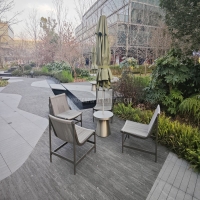Welcome to the website for landscape facilities products and knowledge.
How do landscape tables perform in areas with high levels of industrial chemicals?
Landscape tables designed for areas with high industrial chemical exposure must prioritize durability and resistance. Common materials like powder-coated steel, marine-grade aluminum, and high-density polyethylene (HDPE) are favored for their ability to resist corrosion, oxidation, and chemical degradation.
In heavily polluted zones, untreated wood or low-quality metals can deteriorate rapidly due to acid rain, airborne pollutants, or chemical spills. Powder-coated finishes provide an extra protective layer, while HDPE resists moisture and chemical absorption. Stainless steel with high chromium content is another robust option, though it requires regular maintenance to prevent pitting.
Proper drainage design is also critical—pooled chemicals can accelerate wear. Slatted surfaces or perforated designs help minimize liquid retention. For long-term performance, selecting tables with UV-stabilized materials prevents fading and brittleness caused by industrial byproducts.
Regular cleaning with pH-neutral solutions removes chemical residues without damaging surfaces. While no material is entirely impervious, high-performance landscape tables in industrial areas can last years with the right combination of material science and maintenance.
Related search:

Recommendation
Metal structure rattan chair without armrests for single person, with woven seat and backrest.